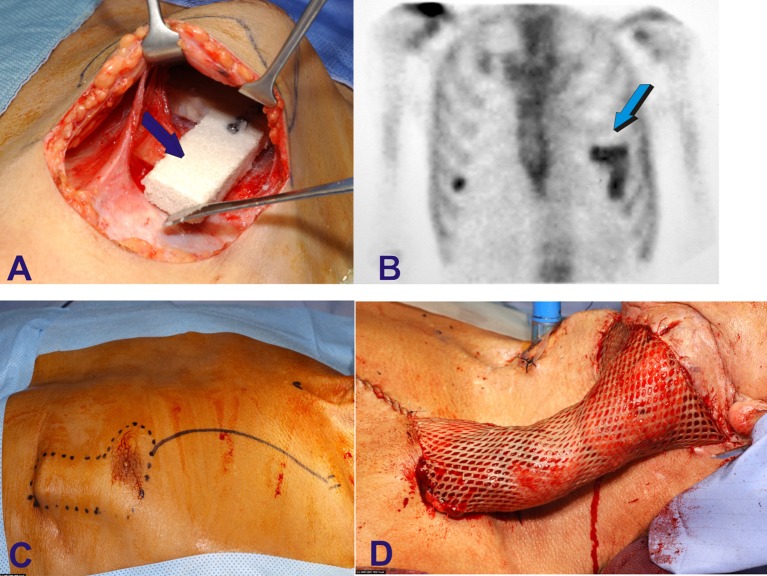Figure 3.
Human intramuscular heterotopic fabrication of a hydroxyapatite/bone morphogenetic protein-7 (hBMP-7) bioreactor for auto-transplantation to large mandibular defect after squamous cell carcinoma avulsion and debridement. The compelling problem of limited osteoinduction in spite of supra-physiological doses of human recombinant morphogenetic protein-2 and -7 (hBMP-2, hBMP-7) forced the use of heterotopic vascularized muscular sites to construct pre-fabricated osteogenic implants for later auto-transplantation in orthotropic mandibular site in a human patient (Heliotis et al., 2006). (A) After the analyses of several coral-derived macroporous constructs implanted in the rectus abdominis muscle of Papio ursinus (Ripamonti, 1991, 1996, 2006; Ripamonti et al., 1993, 2009, 2010) a L-shaped coral-derived construct was also implanted into the pectoralis maior of a human patient combined with 2.5 mg doses of hBMP-7 (Heliotis et al., 2006). (B) Scintigraphy shows bone formation within the prefabricated intramuscular construct later (C) rotated with a composite myo-cutaneous flap (D) into the recipient autologous mandibular bone defect (Heliotis et al., 2006).

